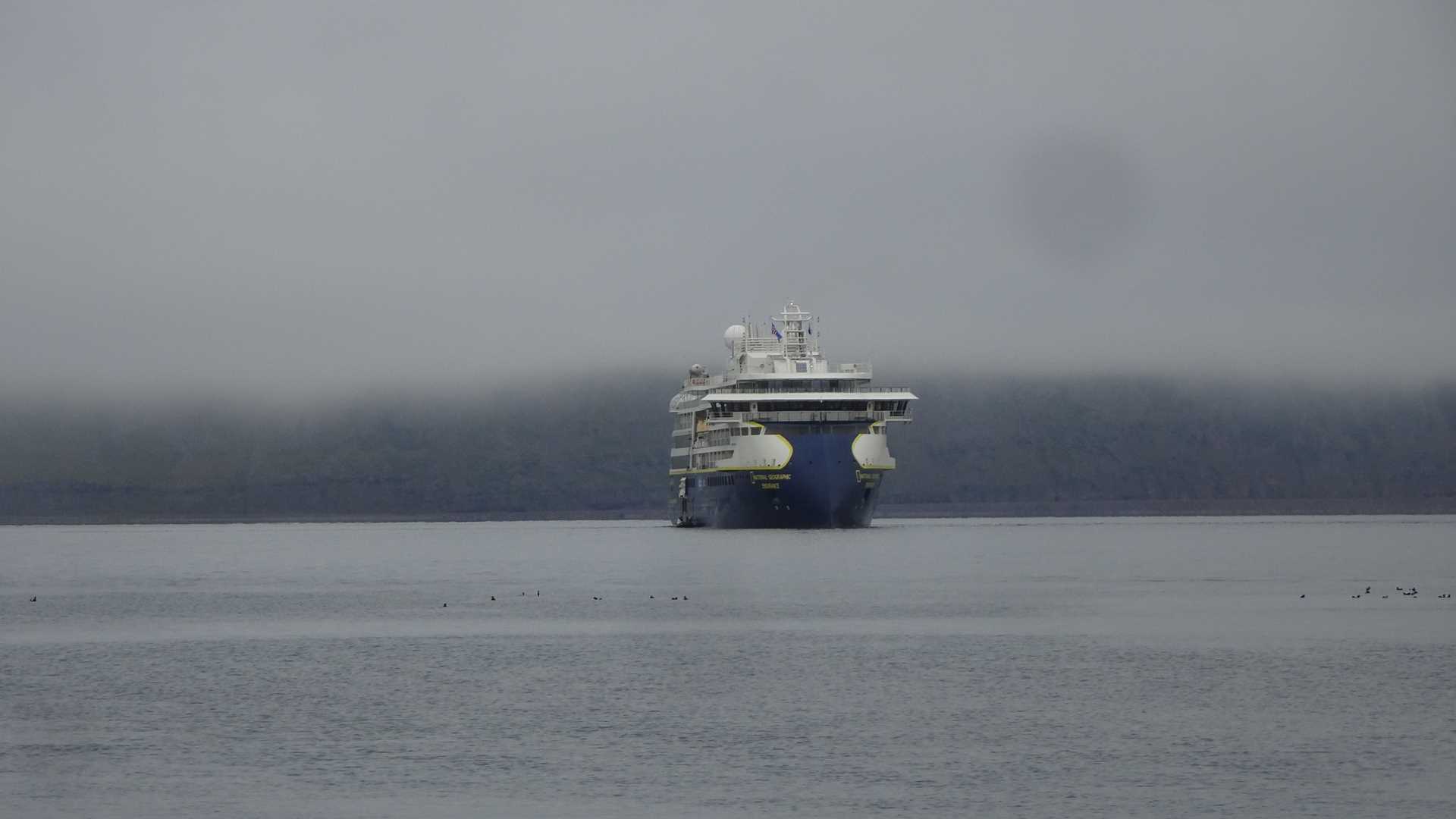On a foggy morning, the National Geographic Endurance anchored near Vigur Island in the northeastern part of Iceland. Right next to the landing site, there was mixed a colony of harbor seals and gray seals. The seals and their pups were resting on kelp-covered rocks and were not afraid of us. Gradually, as the fog lifted, we saw a breath-taking picture of magnificent basalt cliffs on the other side of the fjord.
The owner of the island explained that Vigur is a private nature reserve which has been protecting colonies of eider ducks and puffins for many decades, though he only bought the island two years ago. In so many ways this place is unique in the world. According to the Icelandic sagas, it was settled in 1220, exactly 801 years ago, and it has been inhabited ever since. The island has a long history, and we could see many artifacts from different time periods, including the farmhouses, boats, and even Iceland’s oldest windmill, which is still functional. We also learned fascinating stories of successful nature conservation. This island is the largest eider farm in the world, although all eiders are wild birds. We visited an exhibition and a current workshop for processing the eider down.
In the afternoon, on the way to Dynjandi waterfall, Silja, our guest speaker, had her presentation interrupted by a spectacular show of several pods of humpback whales around our ship.
We arrived to Dynjandi waterfall in the afternoon, where guests had an option for a long hike or a medium hike, both ending at the waterfall site. This was the most spectacular waterfall I have ever seen. The volume of water falling from the height of several hundred meters was very impressive on its own, but the falls also have a very unusual convex shape—if you were to look from the top you would see them curving outwards. Waterfalls are typically concave, so this feature also made an impression on me.
During dinner we cruised along the magnificent cliffs of Iceland’s westfjords and enjoyed a view of numerous glacial cirques and glacially cut valleys.







